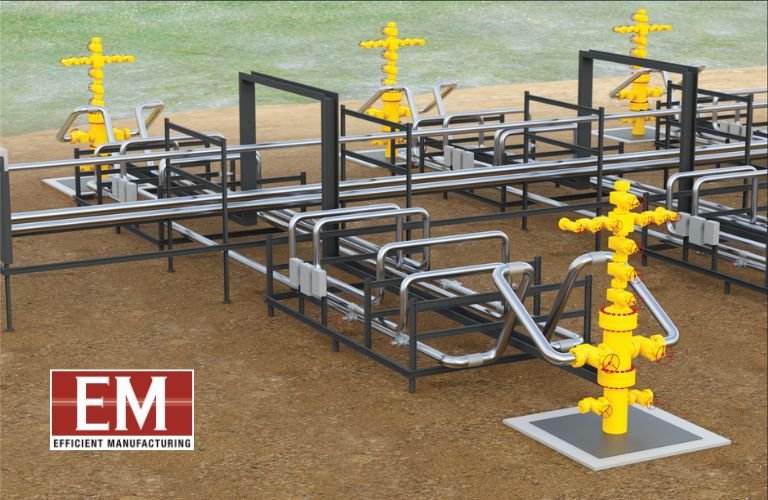Industrial pumping systems are being revolutionised by the integration of IIoT and AI, driving greater efficiency, sustainability, and cost savings. Anil Sethi, Founder & Chairman of Pump Academy (iPUMPNET), explores how these technologies are transforming conventional pumping stations into intelligent, data-driven ecosystems. From predictive maintenance to real-time performance optimisation, the future of pumping lies in smart innovation.
Today, efficiency, sustainability and cost-effectiveness have become vital for industries globally. In order to achieve them, businesses are increasingly using advanced technologies. Pumping systems, the core of various sectors, are being integrated with the Industrial Internet of Things (IIoT) and Artificial Intelligence (AI), transforming their operations. The conventional water pumps relied on reactive maintenance and time-based repair schedules. Nevertheless, they resulted in inefficiencies, unexpected breakdowns and high operating costs. These challenges led pumping systems to migrate to a smarter and data-driven architecture.
In smart pumping systems, advanced technologies offer important insights about pump behaviour, helping operators make informed decisions. This transition is not merely a technological advancement; it is the water management systems’ transformation. It further guarantees the sustainability and dependability of urban infrastructure, industrial applications and agricultural irrigation systems.
Significance of IIoT in Pumping Systems
IIoT is the backbone of contemporary pumping station efficiency. It supports remote monitoring, real-time analytics, and automated control. It also detects variables like pressure, temperature and vibration in pump sensors. These sensors provide data to edge computing tools or cloud-based platforms that analyse and analyse it to enhance operations.
Meanwhile, IIoT-powered pumps provide continuous performance monitoring. It enables the early detection of any issues. In contrast to conventional monitoring, IIoT solutions provide rapid information on the condition and operation of the pump. Similarly, sensor data is analysed by machine learning (ML) algorithms. It also helps the maintenance team to deal with challenges before they become worse. This approach further minimises overall maintenance costs while increasing equipment lifespan and reducing downtime.
At the same time, energy efficiency acts as a critical factor in pumping systems. With IIoT, pumping systems can adjust their operations based on their demand while reducing energy usage. Variable Frequency Drives (VFDs), along with clever control algorithms, helps in dynamic speed modifications. As a result, pumps operate at their efficiency levels. Also, IIoT helps operators access real-time data from any location. This significantly benefits extensive water distribution systems, reducing costly and labour-intensive on-site evaluations.
Transforming Pumping Systems with AI and ML
AI has altered pumping station management by implementing self-learning algorithms to forecast, assess and improve performance with minimum human involvement. AI boosts efficiency by refining operating decisions and reducing energy usage. Also, ML algorithms evaluate massive volumes of operational data to identify inefficiencies. These algorithms make real-time recommendations by continuously learning from past trends and operational patterns thus, improving pump efficiency.
For instance, if a pump is wasting too much energy because of cavitation, AI can detect the problem and make necessary changes to stop the damage from becoming worse. This method ensures that pumps operate at their maximum efficiency. Traditional defect identification is based on periodic inspections that can overlook subtle indicators of deterioration. With AI, sensors identify early warning signals of pump failure like unusual vibration patterns. Not only this but AI categorises faults and suggests remedial actions to avoid major breakdowns.
In a similar vein, maintaining consistent water pressure is crucial in distribution networks to prevent pipe failures or insufficient supply. AI control systems evaluate demand fluctuations and adjust pump speeds accordingly, ensuring optimal pressure levels. As a result, the efficacy and durability of the infrastructure components have significantly increased.
Digital Twins: The Novel Technology in Pumping Systems
Digital Twin technology is transforming the management of pumping stations by generating virtual duplicates of actual pumps. These digital models consistently acquire real-time data from IIoT sensors, enabling operators to simulate various operational scenarios and forecast future performance. Integrating AI with digital twins enables operators to evaluate diverse scenarios, optimise pump setups and simulate maintenance techniques prior to executing modifications in the physical system. This approach not only mitigates risks but also contribute to increasing the overall performance of pumping systems.
Sustainability: The New Normal
By lowering energy consumption and reducing water waste, the combination of AI and IIoT in pumps is improving sustainability. These technologies also significantly lower carbon emissions. AI optimisation keeps pumps running at peak efficiency, cutting energy usage in half. Smart sensors reduce maintenance costs and ensure optimal water management by detecting water leaks and anomalies.
Defining Future of Pumps with IIoT and AI
Pumping stations will become increasingly autonomous, sustainable, and efficient as AI and IIoT technologies continue to develop. Additionally, future improvements in AI will allow for more accurate predictive maintenance and fault diagnoses. With edge computing, more data processing may take place at the pump level, leading to better real-time decision-making with reduced latency. Pumps will become more efficient with sensor technology advancing to provide more precise measurements. Also, pumping stations that incorporate IIoT will be able to interface with larger smart city infrastructures. This will help in enabling coordinated energy grids and water distribution networks.
Consequently, Fortune Business Insights has predicted that the global smart pumps market size will reach USD 1.75 billion by 2032. This market growth is driven by the rising trend toward energy efficiency and growth in IIoT as it provides monetary benefits to the financial framework. Also, substantial development in HVAC (heating, ventilation, and air-conditioning) frameworks and advancement in modern oil fields are also some of the key factors driving market growth. The study also anticipates that the ongoing market research and development involve the integration of advanced process control features and real-time data monitoring into smart pump systems. This will offer existing and emerging players in the smart pump industry more growth opportunities.
To conclude
The combination of IIoT and AI is transforming pumping station efficiency by allowing real-time monitoring, predictive maintenance and data-driven decision-making. These technologies improve pump performance and effectively contributes to sustainability. Enterprises can increase durability and dependability of their pumping systems by leveraging these technologies and smart sensors.
The future of pumping stations lies in interconnected and intelligent ecosystems. These help in increasing efficacy, reducing energy wastage and promoting sustainability. As digital technologies continue to develop, pumping stations will become intelligent assets that improve operating efficiency, save costs and guarantee a reliable and sustainable water supply for the future.












